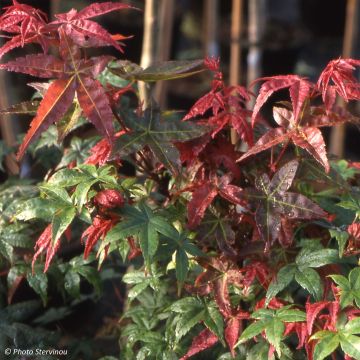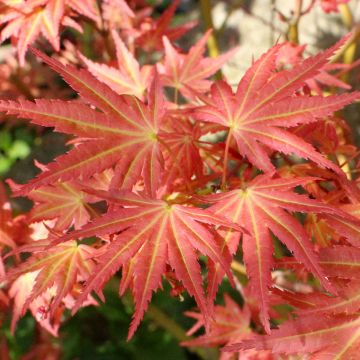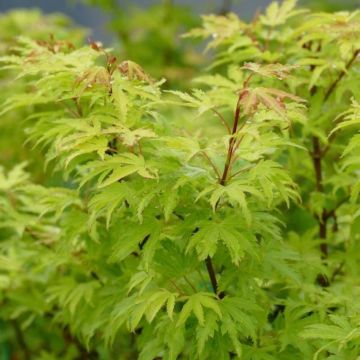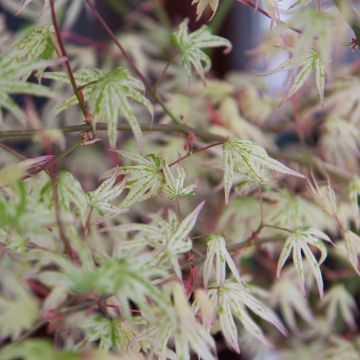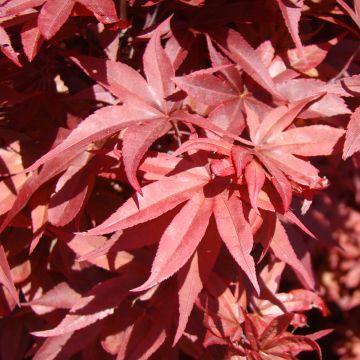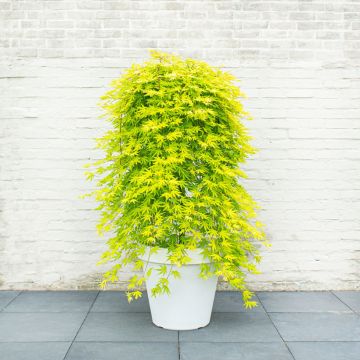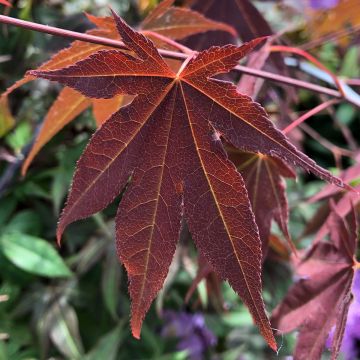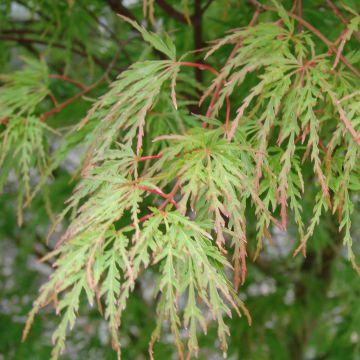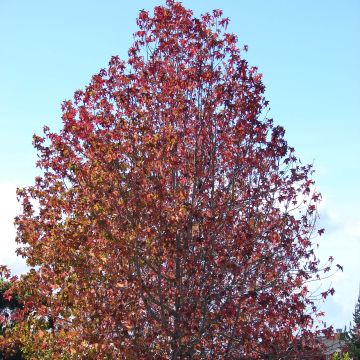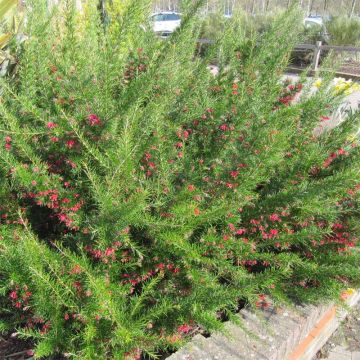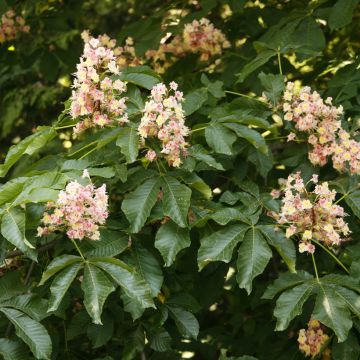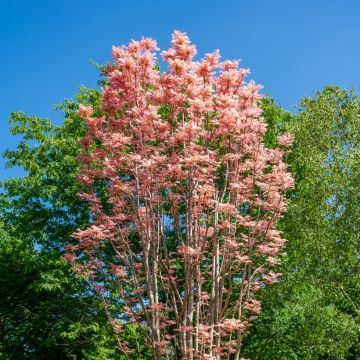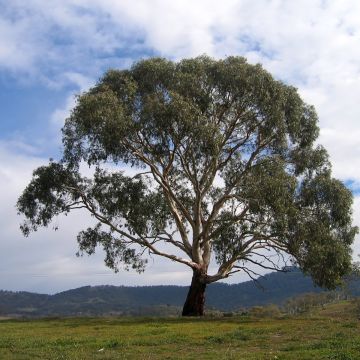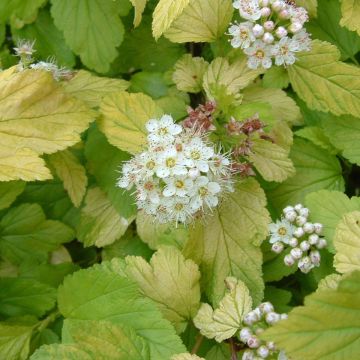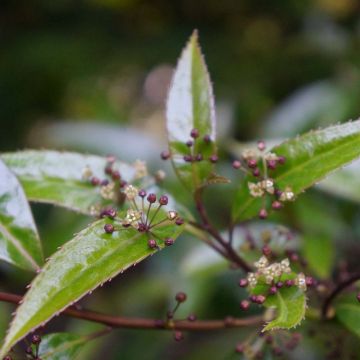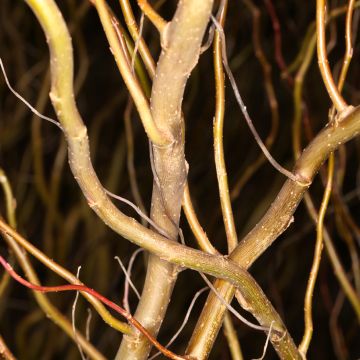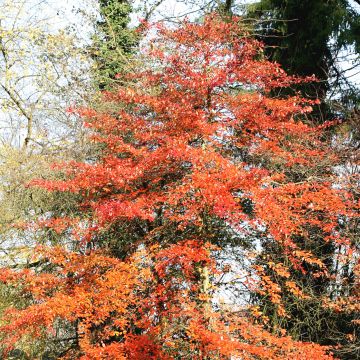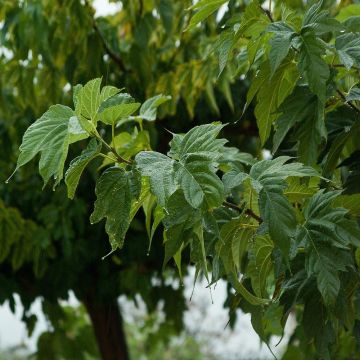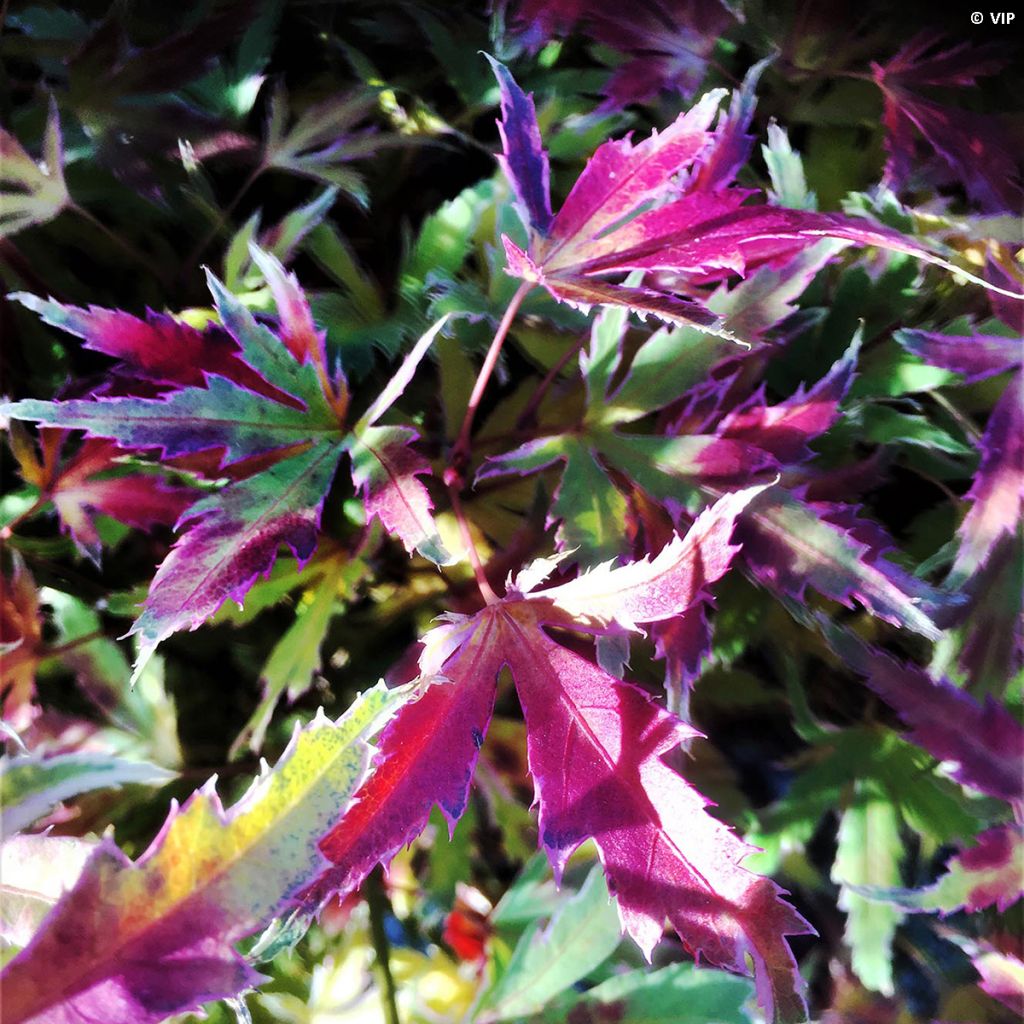

Erable du Japon - Acer palmatum Metamorphosa 'Arjos1'
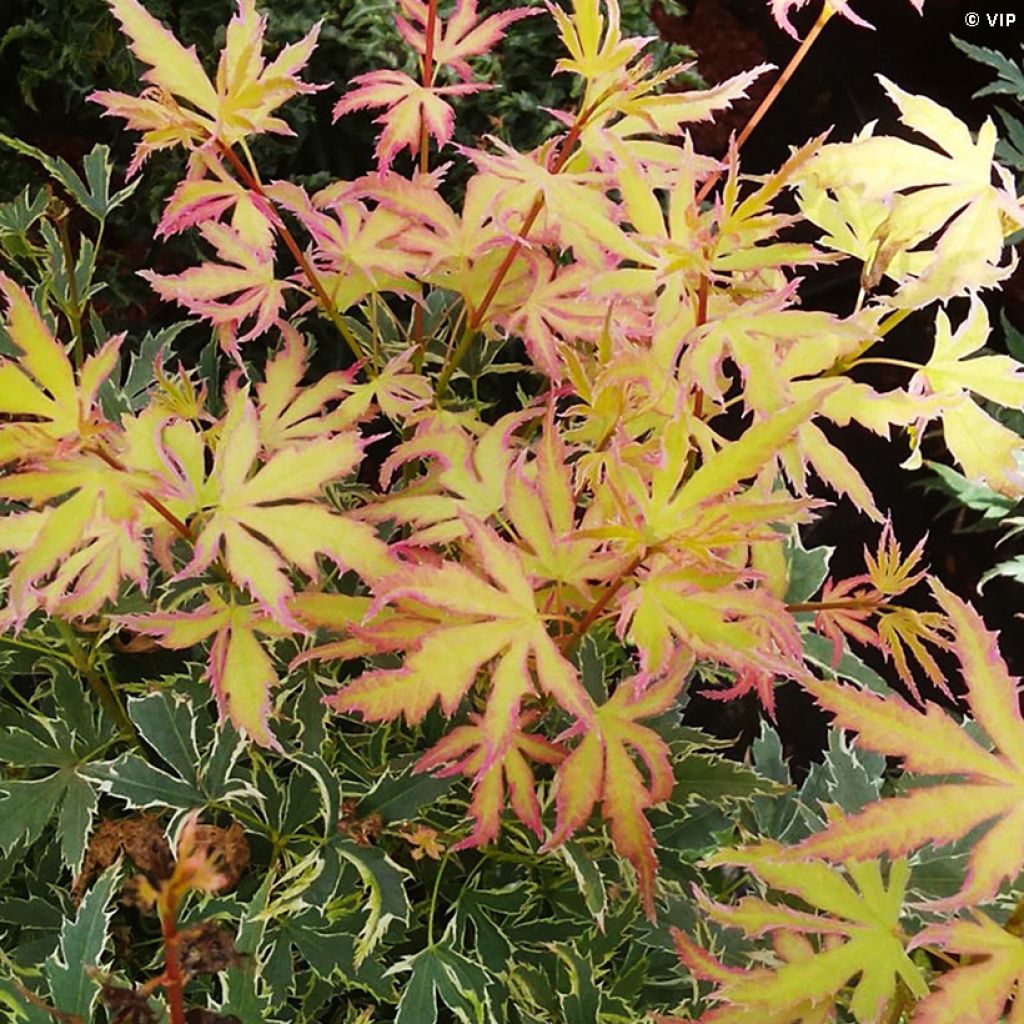

Erable du Japon - Acer palmatum Metamorphosa 'Arjos1'
Acer palmatum Metamorphosa Arjos1 cov - Japanese Maple
Acer palmatum Metamorphosa 'Arjos1' cov
Japanese Maple, Palmate Maple
Very disappointed with the plant received: 35 cm tall, which is half the size mentioned as a reference (70 to 80 cm). Compared to other suppliers offering an equivalent size at a much lower price... My fidelity is dismayed...
JF, 27/01/2025
This item cannot be shipped to the selected country
Delivery charge from €5.90
More information
Schedule delivery date,
and select date in basket
This plant carries a 24 months recovery warranty
More information
We guarantee the quality of our plants for a full growing cycle, and will replace at our expense any plant that fails to recover under normal climatic and planting conditions.
From €5.90 for pickup delivery and €6.90 for home delivery
Express home delivery from €8.90.
Does this plant fit my garden?
Set up your Plantfit profile →
Description
Acer palmatum Metamorphosa 'Arjos1' truly lives up to its name, as this Japanese maple does indeed undergo a metamorphosis throughout the seasons. Its slender foliage is characteristic of Japanese maples. Its uniqueness lies in the succession of colours that the variegated leaves go through, blending from yellow in spring to purple in autumn, creating a constant spectacle in the garden. Very hardy, this ornamental bush thrives in partial shade or even under the shade of trees, in moist but well-drained non-calcareous soil.
Japanese maples used to belong to the Aceraceae family, but they have been classified under the much larger Sapindaceae family for about ten years now - in which one can find various trees, such as goldenrain tree (Koelreuteria paniculata) or even lychee (Litchi chinensis). There are many horticultural varieties of Acer palmatum, which have been developed by Japanese horticulturists for a long time, but Europeans have also made their contributions.
Acer palmatum Metamorphosa 'Arjos1' is a Dutch creation by Mr. Jos van Meuwen and Mr. Arjan Keijzer in 2010. This recent cultivar was a finalist in the 2018 Plant of the Year competition organised by the RHS. This medium-sized bush forms a 3m (10ft) tall and 1.5m (5ft) wide clump in 10 years, with a relatively upright and bushy habit. It is perfect for smaller gardens. Its overall shape is more or less spreading, but quite compact, with flexible and mobile branches.
It has beautiful deeply incised leaves with 5 to 7 irregularly toothed lobes, some of which may slightly curl. Highly decorative with its intricate pattern, this foliage is incredibly colourful, evolving throughout the entire growing season. When the leaves first emerge, they are yellow-green, then they take on a dominant yellow colour, edged with pink. In summer, the foliage turns bright green, edged with white. In autumn, it reaches its climax in shades of orange, crimson, or even purple.
Contrary to popular belief, Acer palmatum does not particularly require ericaceous soil. It does need deep, humus-rich, neutral to acidic soil that remains moist and perfectly drained.
Acer palmatum Metamorphosa 'Arjos1' will bring a touch of Japan to your garden. Pair it with equally evocative plants such as Camellias, whose beautiful shiny dark green foliage will enhance the colourful whims of this maple, while their exquisite flowers will delight the eye. By playing with different varieties, it is indeed possible to enjoy their sumptuous blooming for a good part of the year. The various species of Sarcococca will fit into the same spirit, combining the elegance of their fine evergreen foliage with the advantage of their delicately scented winter flowering. Stachyurus praecox, unjustly overlooked, displays one of the most visually appealing blooms at the very beginning of spring, consisting of hundreds of pale-yellow bells arranged in long pendulous clusters. And to cover the foreground of your shaded flower bed, consider Heucheras, whose multiple colours will complement those of your Japanese maple.
Report an error about the product description
Acer palmatum Metamorphosa Arjos1 cov - Japanese Maple in pictures
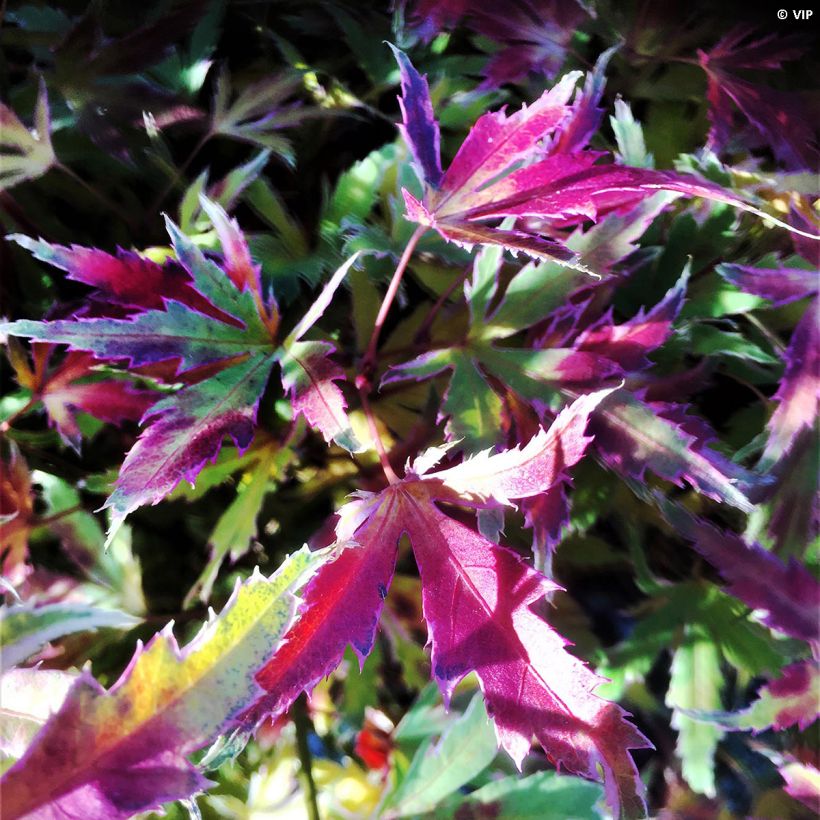

Plant habit
Flowering
Foliage
Botanical data
Acer
palmatum
Metamorphosa 'Arjos1' cov
Sapindaceae
Japanese Maple, Palmate Maple
Cultivar or hybrid
Other Japanese Maples
Planting and care
Plant in spring or autumn in preferably light, acidic, deep, soft and well-drained soil, in a semi-shaded or shaded position, sheltered from cold and dry winds. The soil should be kept moist by mulching in summer, if necessary, but should not be waterlogged in winter. Apply a significant amount of organic matter every 3 years to ensure a good humus content in the soil. Mist the foliage on hot evenings. Winter pruning is limited to balancing the branches. Beware of verticillium wilt, a fungal disease that occurs in heavy and overly moist soil.
Planting period
Intended location
Care
-
, onOrder confirmed
Reply from on Promesse de fleurs
Striking foliage shrubs
Haven't found what you were looking for?
Hardiness is the lowest winter temperature a plant can endure without suffering serious damage or even dying. However, hardiness is affected by location (a sheltered area, such as a patio), protection (winter cover) and soil type (hardiness is improved by well-drained soil).

Photo Sharing Terms & Conditions
In order to encourage gardeners to interact and share their experiences, Promesse de fleurs offers various media enabling content to be uploaded onto its Site - in particular via the ‘Photo sharing’ module.
The User agrees to refrain from:
- Posting any content that is illegal, prejudicial, insulting, racist, inciteful to hatred, revisionist, contrary to public decency, that infringes on privacy or on the privacy rights of third parties, in particular the publicity rights of persons and goods, intellectual property rights, or the right to privacy.
- Submitting content on behalf of a third party;
- Impersonate the identity of a third party and/or publish any personal information about a third party;
In general, the User undertakes to refrain from any unethical behaviour.
All Content (in particular text, comments, files, images, photos, videos, creative works, etc.), which may be subject to property or intellectual property rights, image or other private rights, shall remain the property of the User, subject to the limited rights granted by the terms of the licence granted by Promesse de fleurs as stated below. Users are at liberty to publish or not to publish such Content on the Site, notably via the ‘Photo Sharing’ facility, and accept that this Content shall be made public and freely accessible, notably on the Internet.
Users further acknowledge, undertake to have ,and guarantee that they hold all necessary rights and permissions to publish such material on the Site, in particular with regard to the legislation in force pertaining to any privacy, property, intellectual property, image, or contractual rights, or rights of any other nature. By publishing such Content on the Site, Users acknowledge accepting full liability as publishers of the Content within the meaning of the law, and grant Promesse de fleurs, free of charge, an inclusive, worldwide licence for the said Content for the entire duration of its publication, including all reproduction, representation, up/downloading, displaying, performing, transmission, and storage rights.
Users also grant permission for their name to be linked to the Content and accept that this link may not always be made available.
By engaging in posting material, Users consent to their Content becoming automatically accessible on the Internet, in particular on other sites and/or blogs and/or web pages of the Promesse de fleurs site, including in particular social pages and the Promesse de fleurs catalogue.
Users may secure the removal of entrusted content free of charge by issuing a simple request via our contact form.
The flowering period indicated on our website applies to countries and regions located in USDA zone 8 (France, the United Kingdom, Ireland, the Netherlands, etc.)
It will vary according to where you live:
- In zones 9 to 10 (Italy, Spain, Greece, etc.), flowering will occur about 2 to 4 weeks earlier.
- In zones 6 to 7 (Germany, Poland, Slovenia, and lower mountainous regions), flowering will be delayed by 2 to 3 weeks.
- In zone 5 (Central Europe, Scandinavia), blooming will be delayed by 3 to 5 weeks.
In temperate climates, pruning of spring-flowering shrubs (forsythia, spireas, etc.) should be done just after flowering.
Pruning of summer-flowering shrubs (Indian Lilac, Perovskia, etc.) can be done in winter or spring.
In cold regions as well as with frost-sensitive plants, avoid pruning too early when severe frosts may still occur.
The planting period indicated on our website applies to countries and regions located in USDA zone 8 (France, United Kingdom, Ireland, Netherlands).
It will vary according to where you live:
- In Mediterranean zones (Marseille, Madrid, Milan, etc.), autumn and winter are the best planting periods.
- In continental zones (Strasbourg, Munich, Vienna, etc.), delay planting by 2 to 3 weeks in spring and bring it forward by 2 to 4 weeks in autumn.
- In mountainous regions (the Alps, Pyrenees, Carpathians, etc.), it is best to plant in late spring (May-June) or late summer (August-September).
The harvesting period indicated on our website applies to countries and regions in USDA zone 8 (France, England, Ireland, the Netherlands).
In colder areas (Scandinavia, Poland, Austria...) fruit and vegetable harvests are likely to be delayed by 3-4 weeks.
In warmer areas (Italy, Spain, Greece, etc.), harvesting will probably take place earlier, depending on weather conditions.
The sowing periods indicated on our website apply to countries and regions within USDA Zone 8 (France, UK, Ireland, Netherlands).
In colder areas (Scandinavia, Poland, Austria...), delay any outdoor sowing by 3-4 weeks, or sow under glass.
In warmer climes (Italy, Spain, Greece, etc.), bring outdoor sowing forward by a few weeks.

































